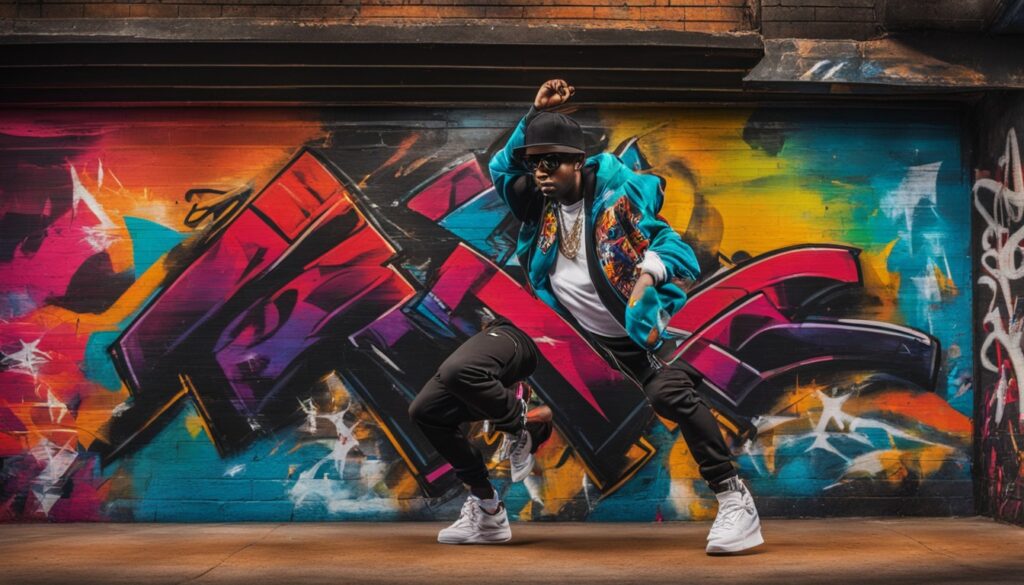The Beatles’ song “Blackbird,” from their 1968 “White Album,” is deeply meaningful. Paul McCartney wrote it as a solo piece. Its significance in music history is profound. McCartney found inspiration in a blackbird’s song he heard in Rishikesh, India. He also drew from the 1960s civil rights movement in the Southern United States. The natural blackbird’s song in the track adds to its beauty and symbolism.
McCartney has said “Blackbird” was inspired by the Little Rock Nine. These nine African American students integrated Little Rock Central High School in Arkansas in 1957. Their enrollment was a key moment in the civil rights movement. McCartney was moved after meeting two of the students, Thelma Mothershed Wair and Elizabeth Eckford. He wanted his music to show support. For more about the song’s profound origins, check out this link.
Key Takeaways
- The Beatles’ “Blackbird” is written by Paul McCartney, featured on the 1968 “White Album”.
- The song was inspired by both a blackbird’s song in Rishikesh, India, and the U.S. civil rights movement.
- “Blackbird” symbolizes the struggles and resilience of the Little Rock Nine during their integration into a segregated school in 1957.
- McCartney incorporated natural birdsong into the track, enhancing the song’s haunting and symbolic quality.
- “Blackbird” was recorded in just one day at EMI Studio Two and remains one of the most covered songs of all time.
Origins and Inspiration Behind “Blackbird”
Paul McCartney’s “Blackbird” mixes classical tones with social commentary. Its origins trace to McCartney’s folk roots and deep admiration for Johann Sebastian Bach. Specifically, Bach’s Bourrée in E minor greatly influenced “Blackbird’s” melody.
The Influence of Johann Sebastian Bach’s Bourrée in E minor
Learning about McCartney’s connection with Bach’s music adds to “Blackbird’s” story. He discovered the Bourrée in E minor alongside George Harrison. Its elegance made a significant impact. This is seen in “Blackbird,” where guitar work mirrors the Bourrée’s complex patterns. It blends classical grace with modern creativity.
The Civil Rights Movement Context
The Civil Rights Movement deeply ties to the song’s creation. Following Martin Luther King Jr.’s death, McCartney aimed to inspire those battling racial injustice. The title “Blackbird” represents Black individuals rising against oppression.
The incident involving the Little Rock Nine in 1957 deeply moved McCartney. Meeting member Melba Pattillo Beals and hearing her story influenced the song. This historical moment, combined with McCartney’s musical skill, created a lasting song.
| Key Influences | Details |
|---|---|
| Johann Sebastian Bach Influence | Bach’s Bourrée in E minor informed the guitar composition. |
| Civil Rights Musical Inspiration | Inspired by the Little Rock Nine and the broader Civil Rights Movement. |
| Events around 1968 | The assassination of Martin Luther King Jr. and ongoing racial tensions. |
| Personal Encounters | McCartney’s interactions with Civil Rights figures, including members of the Little Rock Nine. |
“Blackbird” stands out in history for many reasons. McCartney’s fusion of classical influences with a message of equality shows “Blackbird’s” enduring power. For more insights, explore the song’s background here.
Blackbird Song Meaning
Paul McCartney’s “Blackbird” is known for its deep symbolism and profound meaning. It’s a favorite among The Beatles’ songs. Its layers of interpretation strike a chord with listeners everywhere.
Paul McCartney’s Personal Reflections
“Blackbird” holds a special meaning for McCartney, rooted in his own life. He said it was inspired by the Civil Rights Movement in the United States. The song uses the blackbird as a symbol of hope and resilience for Black women during the 1960s.
McCartney’s unique guitar trill in the song is widely admired. This has made “Blackbird” a signature tune for aspiring guitarists. It’s deeply embedded in our culture.
The song not only talks about struggle but also empowerment. It highlights the hope for freedom and a brighter future. McCartney spotlighted this message when he met Thelma Mothershed and Elizabeth Eckford. These women were part of the Little Rock Nine. McCartney met them at his Little Rock concert on April 30, 2016.
Little Rock Nine and Symbolism
The story of the Little Rock Nine adds to the blackbird’s spiritual meaning. These African American students were the first to join Central High School in Little Rock, Arkansas, in 1957. They showed incredible courage and determination.
McCartney says the bravery of the Little Rock Nine inspired “Blackbird.” The song sends a hopeful message to Black women facing hard times then. It’s a nod to the civil rights pioneers, calling for racial equality and justice.
| Aspect | Description |
|---|---|
| Lyrics | Hope and empowerment for Black women |
| Inspiration | The Civil Rights Movement and Little Rock Nine |
| Key Events | Integration of Little Rock Central High School, 1957 |
| Symbolism | Resilience and struggle for racial equality |
The song “Blackbird” has left a lasting mark, covered by artists like Sarah McLachlan and Beyoncé. Beyoncé’s version, featuring four Black country singers, adds a new layer. It blends McCartney’s original message with current issues, keeping the civil rights conversation alive.
Blackbird Lyrics Analysis
“Blackbird,” a song written by Paul McCartney, is performed by The Beatles. It is a symbol for freedom and empowerment. The era was the Civil Rights movement. Its lyrics are full of deep meanings and poetry.
Explaining The Metaphors
The song “Blackbird” is rich with meaning. “Broken wings” show the harsh impact of injustice and racism. “Sunken eyes” tell of the tiredness from constant struggle. But, there’s hope in “learn to fly,” showing strength and the spirit within.
Lyrical Breakdown and Themes
The song is about freeing oneself and equality. The repeated “Blackbird” emphasizes its importance. The chorus sees a future without racism: “You were only waiting for this moment to arise.” It urges us to grasp the chance for change. This message is as strong now as it was back then.
McCartney’s words shine a light on the plight of black Americans. Yet, they speak to everyone about overcoming hard times. The song touches us on both personal and community levels.
“Complete darkness” to “light of dawn” shows moving from hardship to liberty. It’s about beating challenges and coming out stronger. This fits with leaders like Rosa Parks and significant events like the Little Rock Nine’s enrollment.
“Take these sunken eyes and learn to see, all your life, you were only waiting for this moment to be free.”
Looking into the meaning of “Blackbird”, we find a message that’s both moving and enduring. It speaks to us across time, reminding us of the ongoing fight for justice.
| Year | Event |
|---|---|
| 1957 | Little Rock Nine enrolled in an all-white high school |
| 1968 | Recorded “Blackbird” on 11 June at EMI’s Abbey Road Studios |
| 1969 | Crosby, Stills & Nash performed a cover at Woodstock Festival |
| 2011 | Glee Cast recording of “Blackbird” made it to the charts |
| 2021 | Marilyn McCoo and Billy Davis Jr released Blackbird Lennon-McCartney Icons album |
| 2024 | Beyoncé covered “Blackbird” on her album Cowboy Carter |
Recording and Composition of “Blackbird”
The song “Blackbird” shows how simple elements can create something amazing. It was made during the Blackbird sessions at Abbey Road Studios. Paul McCartney did 32 takes on June 11, 1968, but only 11 were complete. This shows just how much effort was put into making it perfect.
Session Details at EMI’s Abbey Road Studios
The Blackbird sessions took place at the famous EMI’s Abbey Road Studios. George Martin produced it, with Geoff Emerick managing the audio. From these sessions, the final version of “Blackbird” was chosen. It later appeared on the Anthology 3 album. Recording at Abbey Road helped make the song sound amazing.
Acoustic Arrangement and Sounds
The song “Blackbird” shows McCartney’s skill with the guitar beautifully. It makes you feel deep emotions with just a few sounds. The song changes rhythms, especially in the phrase “Blackbird singing in the dead of night.”
The tapping of McCartney’s foot and real bird sounds add something special to the music. These sounds make the song feel alive and unique.
| Aspect | Details |
|---|---|
| Recording Date | June 11, 1968 |
| Location | Abbey Road Studios, London |
| Producer | George Martin |
| Engineer | Geoff Emerick |
| Notable Features | 32 takes, time signature changes, foot-tapping, bird sounds |
McCartney wrote “Blackbird” at his farm in Scotland. Its first performance was outside his London home. Released in November 1968, “Blackbird” has become a symbol of freedom and hope.
Legacy and Cultural Impact of “Blackbird”
“Blackbird” is a powerful symbol of hope and resilience that connects deeply with the civil rights movement. Written by Paul McCartney in 1968, it came at a time of increasing racial tensions in the U.S., following Martin Luther King Jr.’s assassination. The song draws inspiration from the courage of the Little Rock Nine, aiming to offer solace to those fighting against oppression.
The Song’s Role in Civil Rights Movement
The influence of “Blackbird” goes beyond its original time, becoming a part of civil rights history. McCartney’s performances often highlight its significance to the movement. He had a memorable meeting with Thelma Mothershed Wair and Elizabeth Eckford in 2016 in Little Rock, Arkansas. This encounter brought personal stories to light, showcasing the song’s deep empathetic message. It motivates us to remember the sacrifices and victories of those who stood against racial bigotry.
Modern Interpretations and Covers
Many artists have put their stamp on “Blackbird,” each keeping its essential message of hope. Beyoncé’s version is widely celebrated for its bold cultural statement. Her rendition mixes R&B and country, showing the song’s adaptability and ongoing relevance. A significant 64% of listeners hail it as one of the most impactful covers.
The Paragons gave it a reggae twist in 1973, and Anderson .Paak added funk in 2013. Bettye LaVette’s version in 2020 was full of soulful emotion. Jazz icons like Ramsey Lewis and Sarah Vaughan, and even disco king Sylvester, have all made it their own. These diverse covers show that the spirit of “Blackbird” will keep inspiring people for years to come.
FAQ
What is the inspiration behind The Beatles’ song “Blackbird”?
The song “Blackbird” was inspired by the civil rights movement in the U.S. Also, a blackbird Paul McCartney heard in Rishikesh, India influenced it. It carries a powerful message of hope for those facing discrimination.
How is Johann Sebastian Bach’s Bourrée in E minor connected to “Blackbird”?
Bach’s Bourrée in E minor influenced “Blackbird.” McCartney and Harrison used it to sharpen their guitar skills. This practice led to “Blackbird,” with a unique twist on the original tune.
What specific civil rights event influenced the song “Blackbird”?
McCartney points to the Little Rock Nine incident as a key influence. This event saw black students join an all-white school in Arkansas. It marked a significant step towards racial equality.
How does Paul McCartney describe the meaning of “Blackbird”?
McCartney says the song supports black women in the civil rights fight. It’s about surmounting challenges to achieve freedom and equality.
What metaphors are used in the song “Blackbird” and what do they signify?
The song uses “broken wings” and “sunken eyes” to depict struggle. Yet, it also talks of hope and freedom with “moment to arise” and “moment to be free.”
Where was “Blackbird” recorded, and what are key elements of its composition?
It was recorded at Abbey Road Studios. Key elements include McCartney’s singing, acoustic guitar, and a blackbird’s sound. A tapping sound, McCartney’s foot, adds a unique touch.
What is the lasting cultural impact of “Blackbird”?
“Blackbird” symbolizes the Civil Rights Movement. Its hopeful message has inspired many covers and interpretations over time. It continues to connect with people around the world.



